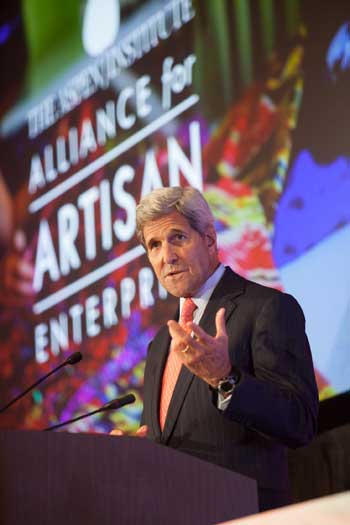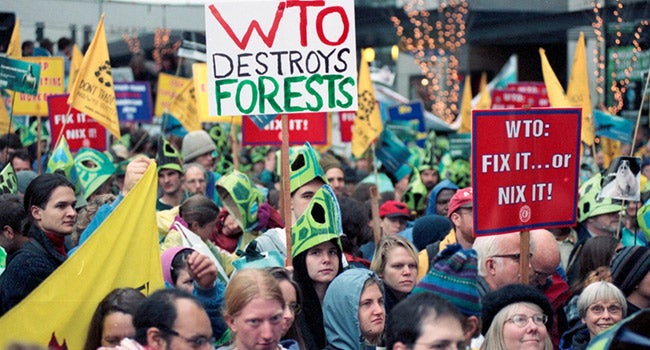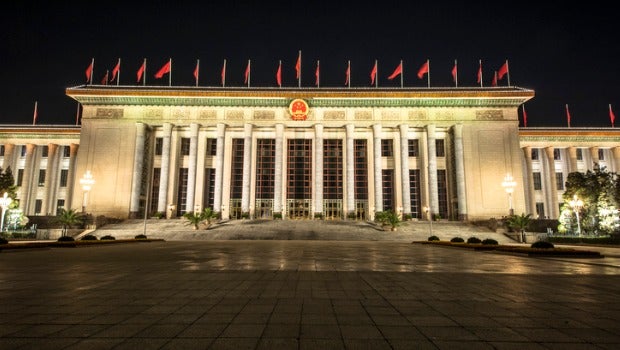Our hopes for the future, whether it’s environmentally or politically or economically, socially, from the standpoint of security — they depend on the growing empowerment and the equitable treatment of women. And that is not an argument; it’s a simple statement of fact. It’s a reality that without empowerment, progress is really impossible. And with empowerment, progress is as inevitable or as near inevitable as anything can be.
We’ve seen that again and again in country after country on issue after issue: where women are empowered, it just makes a huge difference — in the quality of life, in the capacity of children to have opportunity, in the ability of a country to compete and — very important in many places — in the ability of people to be able to make peace and to find alternatives to simply blowing each other up.
 So I am very delighted to be here to participate in this special kind of forum — a forum on artisan enterprise and what it can mean with respect to the new startup economy. It defines the new startup economy. And I just want to offer my profound and continuing commitment — my encouragement, particularly as we prepare for the UN General Assembly this fall and the adoption of the post-2015 Millennium Development Goals. Since the original goals were established — and it wasn’t so long ago; it was only the year 2000 — we have achieved absolutely measurable and frankly striking progress in reducing the share of the world’s people who live in extreme poverty. We’ve also seen remarkable progress in expanding access to water and making primary education possible for women and girls, and we’ve changed many places as a result of it.
So I am very delighted to be here to participate in this special kind of forum — a forum on artisan enterprise and what it can mean with respect to the new startup economy. It defines the new startup economy. And I just want to offer my profound and continuing commitment — my encouragement, particularly as we prepare for the UN General Assembly this fall and the adoption of the post-2015 Millennium Development Goals. Since the original goals were established — and it wasn’t so long ago; it was only the year 2000 — we have achieved absolutely measurable and frankly striking progress in reducing the share of the world’s people who live in extreme poverty. We’ve also seen remarkable progress in expanding access to water and making primary education possible for women and girls, and we’ve changed many places as a result of it.
(U.S. Ambassador-at-large for Women’s Issues) Catherine Russell mentioned my introduction to those 10 extraordinary women in Afghanistan, and they have changed opportunities for women with their courage, because it isn’t easy to do what they did and to step into a world that had been so dominated exclusively by men and by tradition and culture and history. And to march in against all of that and say, “Here, I’m ready, and I’m going to participate and then make a success out of it” takes more than brain power. It takes heart and gut power, and I salute it.
Progress always depends on a range of factors that reinforce one another, and they are factors that include good governance — imperative — quality education, environmental awareness, investments in health, civil security, and the full participation of women in the political and the economic life of the community. Subtract one element of that and you can begin to compound the hurdles and slow down the progress which is so critical in a world where we are seeing so many more people — and young people particularly — seeking opportunity. That’s because it’s a world that is just connected everywhere, all the time, everybody connected to everything. And that raises not just hopes and aspirations, but obviously with that, it raises expectations. And that is always politically a management challenge. If you subtract any of that — any one of those items — and that list becomes more complicated too.
So we’ve also learned that development is everybody’s business. It’s not a job for government; it’s not something you outsource, that you farm out to some expert, because if people aren’t invested in it and people aren’t making decisions about their own lives, you never have the kind of determination of people being all-in in a way that makes a difference. And that’s what it takes. You have to have every single level enriched by the contributions of regional entities, the private sector, independent donors, angel investors, private voluntary groups, civil society — they all have to come together. In the end everybody has to be committed to this kind of endeavor.
We need more of that, by the way, in many more places. I see places of great hope as I travel around the world, but I also see too many places of enormous challenge. And the truth is that as we see society after society now mounting up where you have 50 percent, and in some cases 60 percent, of a country under the age of 35 or 30, and 50 percent of the country many places under the age of 21, and 40 percent under the age of 18 — that’s our challenge, folks, every single one of us. And so it is very, very special for me to be able to be here with you who are all-in on this.
The Alliance for Artisan Enterprise reflects exactly the kind of innovative thinking that we need to engage in if we’re going to expand this playing field as rapidly as we need to in order to implement our very ambitious post-2015 development goals and agenda. And the Alliance is the epitome of a collaborative approach, by definition. It was launched by the State Department three years ago, it’s hosted by the Aspen Institute, and its members include businesses of all sizes — nonprofit organizations and individuals. And it’s bringing to the world’s attention a set of issues that have really been neglected for far too long.
In my career in public life, which is much of my life, I have attended a lot of conferences, a lot of meetings — I had a lot of meetings on economic development. And usually the emphasis is on trade, agriculture, urbanization, or the new information technologies. That’s where you see most of the energy going. But I don’t remember any that I have been to that has focused as today’s forum has focused on the challenges that are faced by artisans. Yet the creative arts are a major employer in many parts of the developing world and an especially significant employer of women. The artisan sector is also a growing industry with exports. It is rapidly spiraling upwards from nations that have a per-capita income well below the international average. That means that if you’re looking for innovative ways to help developing countries to flourish, artisans are a terrific place to begin.
According to research from the Inter-American Development Bank, if the creative economy, globally, were a country, it would already be equal to the fourth-largest economy in the world with the fourth-largest workforce and ranking ninth in the value of exports. That’s just the beginning. One advantage of the Information Age is the ability to be able to potentially increase markets for products that have traditionally been sold just locally, or out of a kiosk, or to tourists when they’re coming in. Not anymore. With the internet, we have a vast opportunity to show people how they can reach out across the planet. And in fact, it’s our imperative as a result to try to make sure we do that, to take talented producers and give them the ability to be able to reach out and connect to other people.
And that doesn’t just happen on its own. It takes planning, it takes people who’ve prepared to do some small level of investment, who put themselves on the line to create that connectivity. It takes a high degree of business know-how, some element of marketing and targeting skill. It requires people who care both about the financial end of things and also about the craftsmanship and the discipline that lends authenticity to the artwork that people want to sell.
So this matters because consumers today care more and more about where something comes from, who produced it, under what conditions did they produce it. And that’s good, and we urge that. As the chairman of our intergovernmental efforts with respect to human trafficking, nothing could be more important, obviously, than to shed light and have transparency on how things are produced and where they’re coming from. People also care about quality. So there’s a big difference between a shirt that’s knocked off in a factory and the kind of clothes that are woven by hand and can be worn for a lifetime.
And although it’s still in its infancy, this Alliance for Artisan Enterprise has already become an important platform for identifying and breaking down barriers to small-scale artisans in countries all across the developing world.
As one means of drawing attention to this effort, the alliance is hosting a multimedia competition that has allowed artisans to go out and strut their stuff. The awards are going to be announced later this afternoon — I’m sorry I won’t be able to be here for that — but I want to congratulate every single one of you for your interest in that, for your willingness to take part. More than 150 entries were received representing artisans from 42 different countries. I was struck by the variety of the projects and the passion that all of them showed, not just in terms of artistic talent, but also in their dedication to expanding opportunity for people in communities that are not always thought of as having the potential to be included when you start talking about the global economy.
For example, one finalist that drew my attention was Sasa Designs by the Deaf. In the video that they produced, a young man says in sign language, “I am deaf but I am not quiet.” And a woman adds, “I am deaf but I can make beautiful things.”
Now, by harnessing the artistic skills of the deaf in Kenya and elsewhere in Africa, Sasa Designs is reinforcing a similar sense of inclusion while also preserving timeless traditions and helping people who might otherwise be marginalized to be able to put food on the table for their families.
That’s just one company. One display today in the multimedia competition is an incredible array of talent and commitment as seen in Reema Nanavaty’s success in involving women in a host of economic development activities in rural India. And it can be seen in the “Taking Steps Initiative,” which has used embroidery to bring bereaved Israeli and Palestinian women together. It can be seen in the South Sudan’s Roots Project Center which combines traditional beading with story-telling as a way to earn income and bridge ethnic differences. And it can be seen in Angel Chang’s fabrics, which are made the old-fashioned way — naturally organic, chemically-free, non-polluting, and hand-dyed by local craftswomen, not even requiring the use of electricity — and this in contrast to industrial textile industry, which is one of the largest sources of pollution on Earth.
So the list goes on and on: from traditional Macedonian rugs, to specially-crafted South African dolls, to Guatemalan basket-weaving, to Afghan calligraphy, to the best wool and clothing in the world from Bolivia. The opportunities and the energy are literally all around us and they’re gaining strength. And as it gains this economic foothold, it’s also gaining a kind of spiritual foothold, impressing people, having an impact, and conditioning people’s thoughts about what they ought to be buying or what kinds of things are really worth valuing.
So I hope that everybody’s going to leave here today excited by what you’ve seen, but equally importantly, inspired to do a lot more.
The Alliance for Artisan Enterprise has an extraordinary amount going for it. It’s got all of you, it’s got artisans around the world that, as I said, would equal the fourth largest economy in the world if you put them all together. Nobody should ignore that. There is a real hunger, I am convinced, in this fast-paced, technologically driven, constant communicative world to also stay in touch with traditional ways of doing things so that we don’t forget what our grandparents learned from their grandparents.
There is a hunger to remain connected to our roots and to value products that are crafted with really unique skills and with attention to detail. There’s an honesty and authenticity in those products that is hard to find in a lot of other places.
There’s a hunger to make a difference and to help people who deserve help so that they, in turn, can take advantage of new opportunities and contribute to a more diverse, sustainable, and equitable global economy.
And finally, I hope all of us will agree there will always be a hunger for beauty. Those who can create that beauty — whether with their hands or their voices or their minds — they will always find a warm welcome somewhere, and that is, I’m glad to say, more than true here at the United States State Department in September of 2015. We value it, we want it to thrive and flourish, and we want everybody to enjoy it, and I am convinced this effort of artisans is a way to do that.

